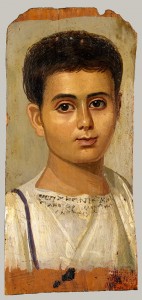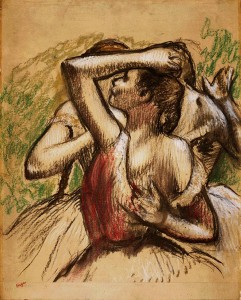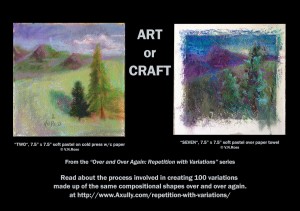This article has been written by Vicki Ross
Which came first, the chicken or the egg?
The sky is the limit for scrapbooking and journaling. I’ve often said that if not for the scrapbooking industry, fine artists would be lacking some of the tools we have today. Manufacturers created design labs to meet the demand for more papers, embellishments, texturing tools, paints, stamps, inks, books, etc. These supplies gradually made their way from the internet to craft and hobby shops…in small enough amounts to not put a strain on anyone’s budget.
Where investing in fine art supplies can easily amount to hundreds of dollars, a small beginning of scrapbooking supplies can be much less. Of course, you can become obsessive/compulsive in collecting either one! For example, fine artists pastels—the kind Degas used—can run $15-18 each…and a color selection of 750+. Major investment. Sure, there are all kinds of variations, from student grade and mid-range artists grade, all prices, all qualities. This is an extreme example, just to make the point.
Whatever kind of creative outlet you choose today…if you trace their lineage back through history you’ll find it!
- Markers with permanent ink—compare to ancient Sumi painting
- GelliPlate—monoprinting without the press. Edgar Degas famously used monoprints as the base for his pastels
- Collage—this term was coined by both Georges Braque and Pablo Picasso in the beginning of the 20th century. Just think what they might have accomplished with all the supplies currently available in today’s marketplace.
- Encaustic—one of the newest darlings on the art scene, can be used with embellishments, collage, fiber, papers, and textured or glossy surfaces. Companies have developed single color bars and pans for ease of use. New? Nope…some of the earliest Greek art was encaustic and survives today. Now, we don’t have to work days to prepare our wax and colors! Have you noticed wax products in the Ranger line?
Portrait of a Boy, Roman period, 2nd centuryEgyptian,Encaustic on wood, Metropolitan Museum of Art
- Acrylic Paint—developed in the 1930’s, and refined continuously, it is readily available in many qualities and for many uses beyond fine art and crafts.
- Acrylic Mediums—Degas invented his own recipe for a fixative on pastels. It is today being marketed under the name SpectraFix and is a casein (milk) based formula.
Three Ballet Dancers, One with Dark Crimson Waist” Degas1899; Pastel on paper, Barnes Foundation
- Oil—used to require careful mixing by chemists, and prepared by apprentices in the studios. Each day the paint had to be prepared and used the same day. Early tubes involved syringes and pig bladders, then it became feasible to paint out of doors in oil.
- Tools—while it is nice (good organization required) to have bright, shiny tools of any mark-making kind, be creative! You can make embossed patterns with mixtures of cornstarch and ModPodge—Pattern Rollers with Toot-di-doos (toilet paper rolls) and acrylic mediums—sticks from the yard—sand from the beach—old paintings recycled for collage pieces—makeup brushes and sponges for blending—textured paper towel for subtle repeat pattern. Anything that will make a mark can be used!
- Zentangles—check out M.C. Escher’s work. I tried the tangles recently because all the marketing made the technique appealing.
Think outside the box! Be proud if you are a ‘crafter’…we all are! Fine Artists, thank crafters, after all, their demand helped create and bring back old techniques. No matter how intricate or simple your work, show pride in it. Research it online and you will more than likely find an old master who made his primitive tools and materials to create whatever he could dream!
Author bio:
Vicki Ross is focused on sharing her journey to art and how life events can shape us through creativity. www.Axully.com Vicki has always been involved deeply in the creative arts, from professional soft crafts publications (knitting/crochet/needlework) to French Hand-sewing, stenciling to macramé, oil painting to encaustics. Whatever your leaning, she believes in the healing power of creating.
You can see more of Vicki’s work at VickiRossArt or via blog posts at Axully – Solid. Useful. Beautiful
.
.






I really appreciate how you’ve related back to original sources. Oftentimes, we forget that certain techniques are not “new” but rather, we all put our own twist on them to make it our own. It’s fun to learn about the Masters and how these techniques developed over time. I am always drawn to how I can create my own tools- just from found objects and things I already have! Very insightful article and great tips, Vicki! Thank you
I’m a writer, artist and theatre director, but for my art I’ve been using a few techniques involving stencils, spray paint, acrylic, spray textures and painted foam board shapes glued to the surface.
Thanks for taking the time to comment, Martice…I really appreciate it. I don’t think there is anything new, but yet every artist is unique with how they use the materials.
The crafts are in fashion, and as a result, have become popular tolos and techniques that enhanced the art.
Thanks for sharing.